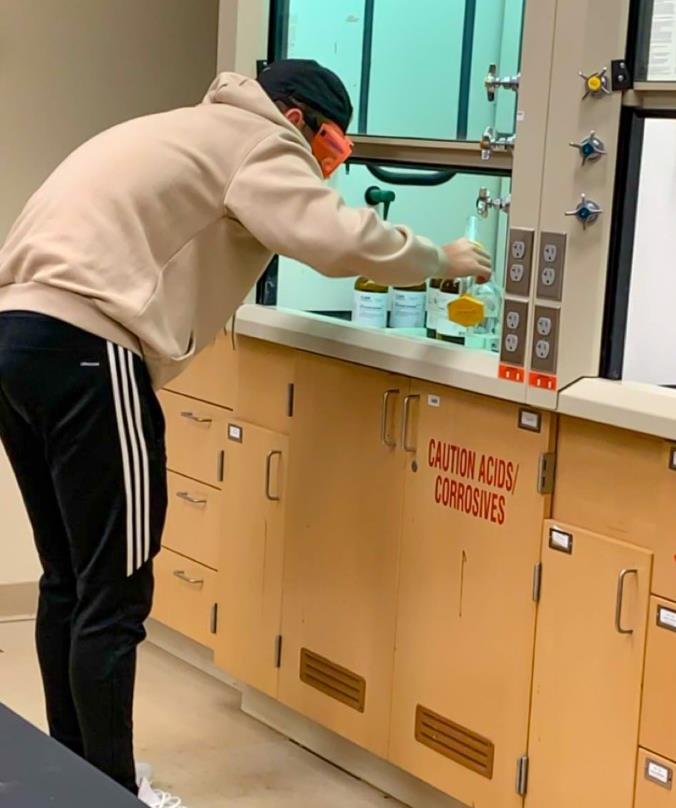 JT Butler spreads out in lab to maintain social distancing rules.
JT Butler spreads out in lab to maintain social distancing rules.
Photo by TJ Whitmer
Professors Modify Class Procedures to Make Labs Safe for Students
TJ Whitmer
Despite Covid-19, science professors and students are at work in their respective labs as the school year gets into full swing. Students are participating in labs once a week to get full hands-on interaction within their subject.
Dr. Kathy Davis, associate professor of chemistry, had a trial run this summer within her general chemistry II lab. That trial run involved spreading out the students to maintain the social distancing rule and doing lab projects without partners. The summer allowed professors to come up with a plan for scheduling students during labs and adding a buffer for those that got put into quarantine.
Professors are also doing more work outside the classroom when it comes to scheduling. “There are lots of pieces that need to be juggled,” said Dr. Mark Bryant, associate professor of chemistry, said. “Recording videos for the virtual experiments, scheduling students to not exceed social distancing, and modifying experiments are all done to enhance and keep students safe.”
The biology department has also switched up how labs are being conducted. “Students are completing simulations, so that they are still working through the lab and material, and are more engaged in the process,” said Dr. Aron Costello-Harris, associate professor of biology. For some courses they are conducting labs outside as they can spread out more and get lab experience at the same time.
When it came to class scheduling for the labs, both professors and students had to work together to make accommodations.
“For those students that needed a lab to graduate but could not get it in their schedule, accommodations were made,” Davis said. If first year and sophomore students needed a lab but could do it later in their schooling, they put it off. “Everything was on an advising basis,” Davis said. “Intro classes are offered each year, and scheduling more time is what we needed to do.”
Students now are divided into two groups of seven to eight students. “Some students come one class after another, or come an entirely different day,” Davis said. The chemistry labs are front loading course work so there is more practice time in case of a quarantine for a student. “I wanted as much in person experience as possible,” Davis said.
Smaller lab sizes result in more productivity during the three-hour lab period as the equipment that can only be used one at a time opens quicker between each use. John-Tyler Butler, a senior chemistry education major, said: “I have honestly been able to get more done without having to wait on others.”
No new equipment was bought for this year, so each student must sanitize their own equipment after each use. While some lab courses have adapted to using less equipment, it is still needed for their experiments. Partners are also not being utilized so students may have to wait when in a larger group. “We hope that the students are patient if there are longer waiting times,” Bryant said.
If a student misses a lab or comes in during the wrong session, the faculty try to adapt and make things work. “We try to deal with things on an individual basis,” Bryant said. “If there is available space, letting someone attend lab on a day that they should have a virtual experiment or attending a different lab section is considered.”
Classes will continue to adapt as the school year moves on, whether it being patient, having more class time to work, or going online to complete an assignment instead of in person. “It’s an adjustment for all, and the faculty are continuing to create meaningful lab experience that meet the learning objectives of their courses, but also meeting the demands/limitations of Covid-19,” Costello-Harris said.